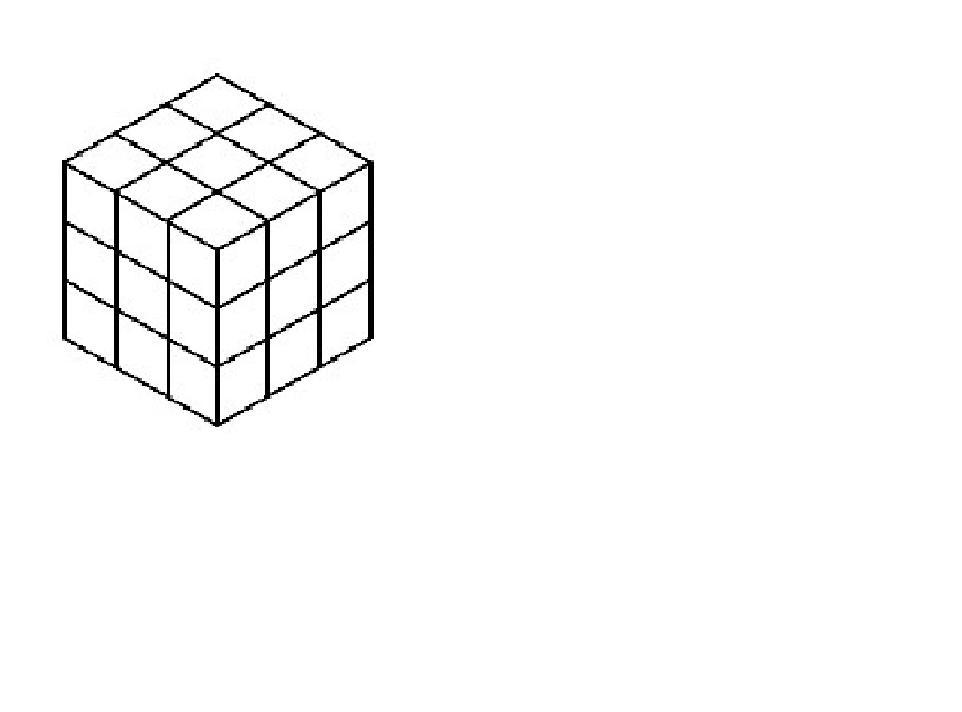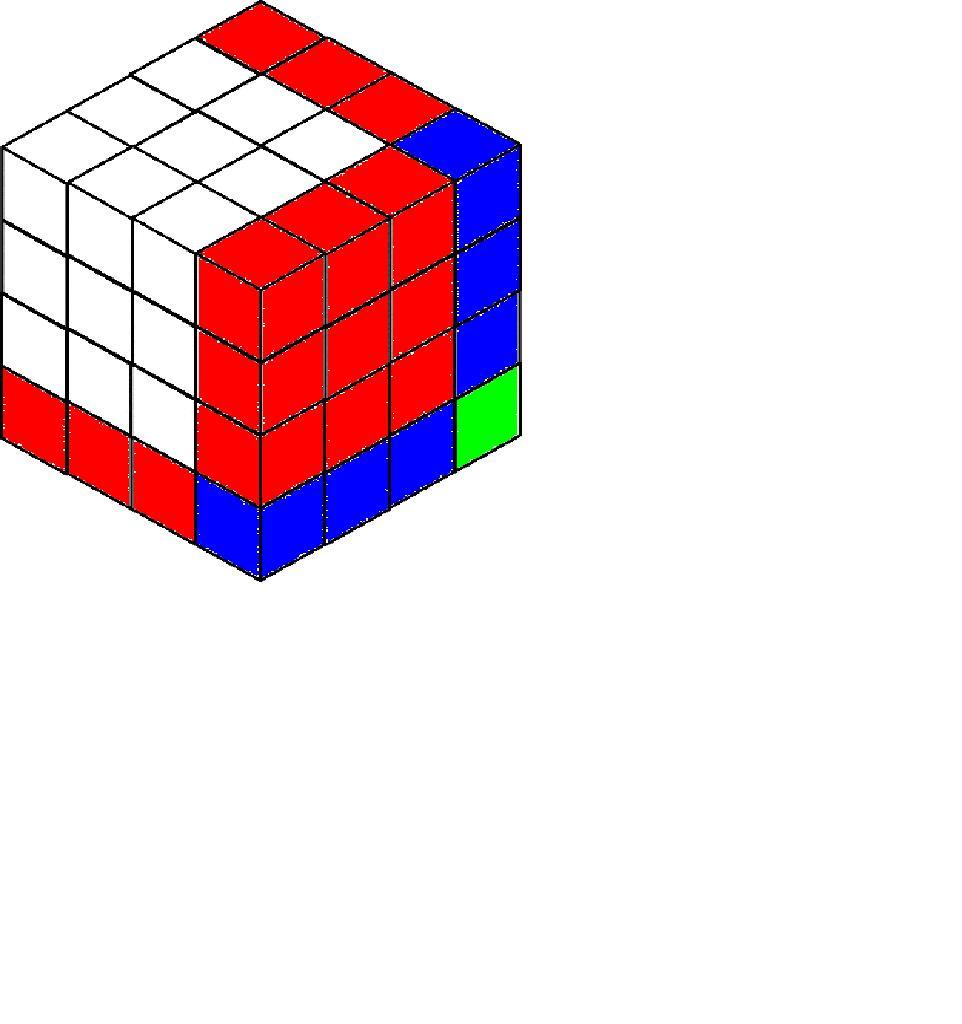So first of all the equation, (a3+b3=c3) for which I thick i can prove there is no whole number solution for it. At the end you can know why I can do it only for 3 (because of the method I used).
Proof by contradiction.
So, as (a+b)3=a3+b3+3a2b+3ab2
a3+b3=(a+b)3−3ab(a+b)
c3=(a+b)3−3ab(a+b)
c=[(a+b)3−3ab(a+b)]31
So now for "c" to be an whole number, the term (a+b)3−3ab(a+b) must be a cube
Now let us think about the term 3ab(a+b) and what will be its form so that its subtraction will lead to a cube.
- Imagine a (4 by 4) cube to turn it into (3 by 3)


- there are 64 small cubes in 4 by 4
- there are 27 small cubes in 3 by 3
- to convert it will be 43−x=33
- here the x has form [3⋅1⋅(4)2]−[3⋅12⋅4]+[1]3
- Now similarly we convert (a+b)3 into any other cube by subtracting 3ab(a+b)
- With above logic we note that 3ab(a+b) must be of form,
- 3ab(a+b)=3k(a+b)2−3k2(a+b)+k3, where k is a natural number [IMP step]
- so now we prove that this equation is cannot be true(and thus contradiction)
- 3k(a+b)[a+b−k]+k3=3ab(a+b)
- by inspecting we conclude that k is multiple of 3 so let us assume thatk=3m
⇒9m(a+b)[a+b−3m]+27m3=3ab(a+b)
⇒3m(a+b)[a+b−3m]+9m3=ab(a+b)
⇒3m(a+b)2−9m2(a+b)+9m3=ab(a+b)
⇒3m(a+b)−9m2+a+b9m3=ab
⇒ we conclude that m=(a+b)n and thus k=3(a+b)n,where n is natural number.
⇒3(a+b)2n−9n2(a+b)2+9n3(a+b)2=ab
⇒(a+b)2[3n+9n3−9n2]=ab
⇒ Let [3n+9n3−9n2] be S
⇒(a+b)2S=ab
⇒Sa2+Sb2+2Sab=ab
⇒Sa2+Sb2+(2S−1)ab=0
⇒ now note that S is more than 3 for natural n (not proving that)
⇒ so in L.H.S. everything is positive and in R.H.S. there is zero
⇒ so we conclude that there exist no natural k for which 3ab(a+b)=3k(a+b)2−3k2(a+b)+k3 which is necessary condition for whole number solutions of (a3+b3=c3).
⇒ so it is a CONTRADICTION
The proof is incomplete, and it is in progress when (a+b) doesn't divides m
#NumberTheory
Easy Math Editor
This discussion board is a place to discuss our Daily Challenges and the math and science related to those challenges. Explanations are more than just a solution — they should explain the steps and thinking strategies that you used to obtain the solution. Comments should further the discussion of math and science.
When posting on Brilliant:
*italics*or_italics_**bold**or__bold__paragraph 1
paragraph 2
[example link](https://brilliant.org)> This is a quote# I indented these lines # 4 spaces, and now they show # up as a code block. print "hello world"\(...\)or\[...\]to ensure proper formatting.2 \times 32^{34}a_{i-1}\frac{2}{3}\sqrt{2}\sum_{i=1}^3\sin \theta\boxed{123}Comments
don't judge grammar and typos
also you can do similar thing for n=2 (square) but there you will end up with condition and not contradiction
The beginning is confusing and a little more complicated than it needs to be. You're writing a3+b3=c3, and letting c=a+b−k. Expanding this leads to the "IMP step" 3ab(a+b)=3k(a+b)2−3k2(a+b)+k3. I agree that k=3m for some m, and that leads to 3m(a+b)−9m2+a+b9m3=ab. (There's a typo in your version of this equation--you temporarily forgot to cancel a+b from the right side, but that's corrected on the next line.)
The argument fails here: you claim that a+b divides m. It divides 9m3, yes, but not necessarily m. Your argument works when a+b is a prime not equal to 3, but that case is easy from the original equation: (a+b)(a2−ab+b2)=c3, so p=a+b divides c3, hence c, so p∣(a2−ab+b2), but it also divides p2=a2+2ab+b2, so p∣3ab, but it can't divide 3,a,b, done.
Log in to reply
Hi, I appreciate for your point of view but I don't get what you are saying actually ( why c=a+b-k) . And thanks for the typo
Log in to reply
Don't worry about that part, I'm just re-deriving your formula more simply and quickly. The important part of the post is where I point out that the argument fails (the "we conclude that..." statement is not necessarily true).
Log in to reply
but why because m is some natural number n is some natural number
e.g (a+b)=7 and if n=1 then m=7 and k=21
if n=2 then m=14 and k=42 and so on.....
e.g (a+b)=6 and if n=1 then m=6 and k=18
if n=2 then m=12 and k=36 and so on.....
Log in to reply
The problem is that n is not necessarily a natural number: a+b9m3 is an integer, but it's not necessarily true that a+bm is an integer. For instance a+b=12,m=2.
Log in to reply
ok ok I get it. but there are only 3 cases i.e
a+b=3
a+b=9
or m=(a+b)n correct me I am wrong
Log in to reply
No, this is still wrong. Again, look at my example, where a+b=12. There are infinitely many counterexamples. It’s a serious hole.
Log in to reply
oh I get it, but my idea is correct that the equation is not true. I will update the note as I figure out to solve that problem and thank you
Watch Mathologer's proof of Fermat's Last Theorem.